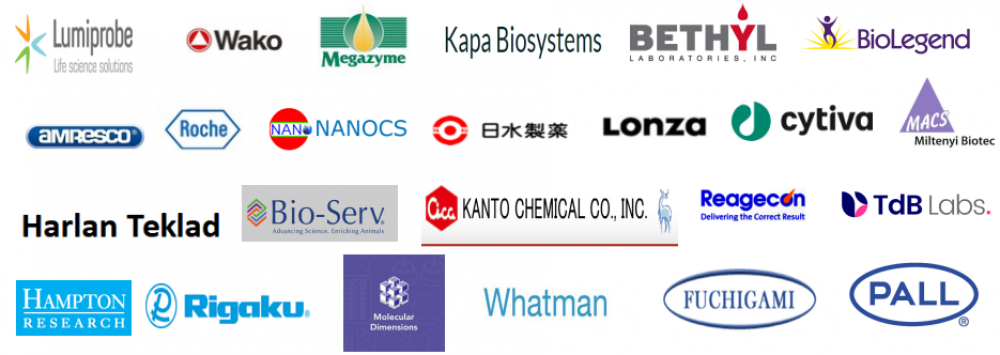描述
Risedronate Sodium 利塞膦酸钠
产品信息
| 产品名称 | 产品编号 | 规格 | 价格(元) |
| Risedronate Sodium 利塞膦酸钠 | MZ99006-500MG | 500mg | 380 |
| Risedronate Sodium 利塞膦酸钠 | MZ99006-1G | 1g | 540 |
| Risedronate Sodium 利塞膦酸钠 | MZ99006-5G | 5g | 1890 |
产品描述
利塞膦酸钠(Risedronate Sodium)是一种含氮的双膦酸盐,抑制破骨细胞介导的骨吸收和调节骨代谢,用于治疗骨质疏松症。利塞膦酸钠能够与骨中羟基磷灰石结晶结合,用作一种抗骨吸收剂。也是一种法尼基二磷酸合酶(FDPS)抑制剂,导致下游破骨细胞活性受抑制,骨吸收和更新减低。另外,利塞膦酸钠具有抗疟活性,体外抑制恶性疟原虫(P. falciparum)生长(IC50=20.3 µM),体内抑制柏氏鼠疟原虫(P. berghei)生长(25 mg/kg,1周)。
产品特性
1) CAS NO:115436-72-1
2) 化学名:P,P′-[1-Hydroxy-2-(3-pyridinyl)ethylidene]bis-phosphonic acid sodium; [1-Hydroxy-2-(3-pyridinyl)ethylidene]bis[phosphonic acid] monosodium salt;
3) 同义名:Risedronate Sodium salt; Sodium risedronate; Risedronic Acid Sodium;NE 58095 Sodium;
4) 分子式:C7H10NNaO7P2
5) 分子量:305.10g/mol
6) 纯度:≥99%
7) 外观:白色至类白色结晶性粉末
8) 溶解性:溶于水(3mg/ml,可能需温热助溶),几乎不溶于DMSO和无水乙醇
9) 化学结构:
保存与运输方法
保存:+4ºC干燥保存,2年有效。长期不用,可置于-20℃保存。
运输:常温运输。
注意事项
1) 本品并非商业化药物,不能用作临床或诊断药物。
2) 为了您的安全和健康,请穿实验服并戴一次性手套操作。
配制储存液
| 质量
溶剂体积 浓度 |
5mg | 10mg | 50mg | 100mg |
| 1mM | 16.39 ml | 32.78 ml | 163.88 ml | 327.76 ml |
| 5mM | 3.28 ml | 6.56 ml | 32.78 ml | 65.55 ml |
| 10mM | 1.64 ml | 3.28 ml | 16.39 ml | 32.78 ml |
使用方法【源自文献,仅作参考】
| 文献1,Dunford JE et al.Structure-activity relationships for inhibition of farnesyl diphosphate synthase in vitro and inhibition of bone resorption in vivo by nitrogen-containing bisphosphonates. J Pharmacol Exp Ther. 2001 Feb;296(2):235-42. PMID: 11160603
体外研究: 样本类型(Sample type):J774 cell homogenates 药物配制(Preparation):BPs (Includingrisedronate) were dissolved in PBS, the pH adjusted to 7.4 with 1 N NaOH, and then filter-sterilized by using a 0.2-μm filter. 实验方法(Assay):J774 cell homogenate (approximately 20 μg of protein/assay) was preincubated with 0.001 to 100 μM BPs for 10 min before addition of [14C]IPP enzyme substrate. The N-BPs ZOL, RIS, IBA, ALN, and PAM inhibited FPP synthase in J774 cell homogenates with IC50 values from 0.02 to 0.85 μM. 重要结果(Result):
|
||||||||||||||||||||||||||||||||||||||||||||||||||||
| 文献2,Jordão FM et al. In Vitro and In Vivo Antiplasmodial Activities of Risedronate and Its Interference with Protein Prenylation in Plasmodium falciparum.Antimicrob Agents Chemother. 2011 May; 55(5):2026-31. PMID:21357292
体内研究: 动物模型(Animal Model):Male BALB/c mouse (3 to 4 weeks old) (n = 10 to 15 per group) were injected intraperitoneally (i.p.) with 106 blood-stage Plasmodium berghei strain ANKA parasites. 药物配制(Preparation):Risedronate was diluted in PBS. 注射剂量(Dosages):Risedronate treatment with different concentrations was initiated in 2 h after infection on day 0 and continued for 7 days. The drug was diluted in PBS and administered i.p. at 10, 15, 20, and 25 mg/kg of body weight/day. Parasitemia levels were monitored microscopically by examining Giemsa-stained thin blood smears on days 4, 7, 11, 14, and 17 postinfection. Throughout this period, the spontaneous death of each animal was computed. The percentage of parasitemia inhibition was calculated as follows: 100−[(mean parasitemia for the treated group/mean parasitemia for the control group)×100]. Among the groups treated with risedronate, only the animals that received 25 mg/kg had a significant inhibition of 77.8%, demonstrating that even after treatment discontinuation, the parasitemia of the animals remained low in relation to that of the controls. 给药途径(Administration):Intraperitoneal Injection |
||||||||||||||||||||||||||||||||||||||||||||||||||||
